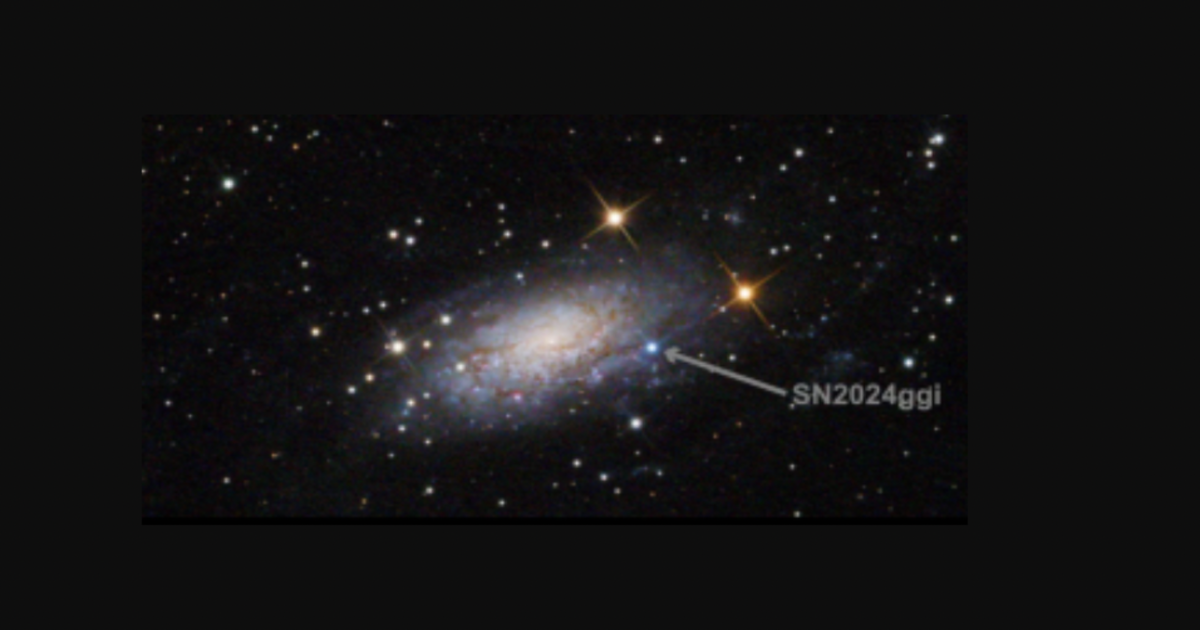




Astronomers have captured an unprecedented close-up image of WOH G64, a red supergiant star located 160,000 light-years away in the Large Magellanic Cloud. Utilizing the GRAVITY instrument on the Very Large Telescope Interferometer in Chile, the image reveals the star expelling gas and dust, indicating it is in a critical phase before a potential supernova. WOH G64 is approximately 2,000 times larger than our Sun and has been under observation since its discovery in 1981. Notably, the star has dimmed significantly over the past decade, suggesting it is shedding material at an accelerated rate. Lead author Keiichi Ohnaka emphasized that this is the first zoomed-in image of a dying star outside the Milky Way. While the exact timing of the star's explosion remains uncertain, it is anticipated that the event could be visible to the naked eye when it occurs. [f65002d9]
In addition to this exciting discovery, amateur astronomer Duncan Milburn recently captured the first images of a supernova in a galaxy called NGC 3621, located approximately 22 million light-years away. The supernova, named SN2024ggi, was initially classified as a magnitude 19 and is expected to increase in brightness to 14 magnitude as it continues its explosive process. This highlights the valuable contributions of amateur astronomers to the field of astronomy and emphasizes the need for more effort in naming supernovae. [14c4c796]
Moreover, scientists have discovered a new black hole behind Omega Centauri, a collection of 10 million stars, which could be the closest one to Earth. This black hole has a mass of at least 8,200 times that of our Sun and is currently in the middle stage of its evolution. The discovery was made by an international team of astronomers using over 500 images from two decades worth of observations captured by NASA's Hubble Space Telescope. The black hole is located about 17,700 light-years away from Earth and is closer than the previously thought closest black hole at 26,000 light-years away. The James Webb Space Telescope will be used for further investigation. [6b0ec168]
The Chandra X-ray Observatory has recorded the aftermath of two supernova explosions that occurred hundreds of years ago. The observatory combined its X-ray images into videos to document the evolution of the Crab nebula and Cassiopeia A. The videos show the remains of the stars being churned by shock waves and illuminated by radiation from the dense, spinning cores left behind. The videos were made to celebrate the 25th anniversary of the observatory. Earlier this year, NASA proposed cutting Chandra's operating funds, but a draft of a House appropriation bill for NASA's 2025 budget expressed support for the continued operation of Chandra. [e9b51b5c]
Additionally, the NASA Hubble Space Telescope has captured five stunning images of star clusters, including the globular cluster NGC 1805 and the star-forming region NGC 3603. These images are crucial for scientists studying stellar evolution and the ages of stars. [cee8b1c0]